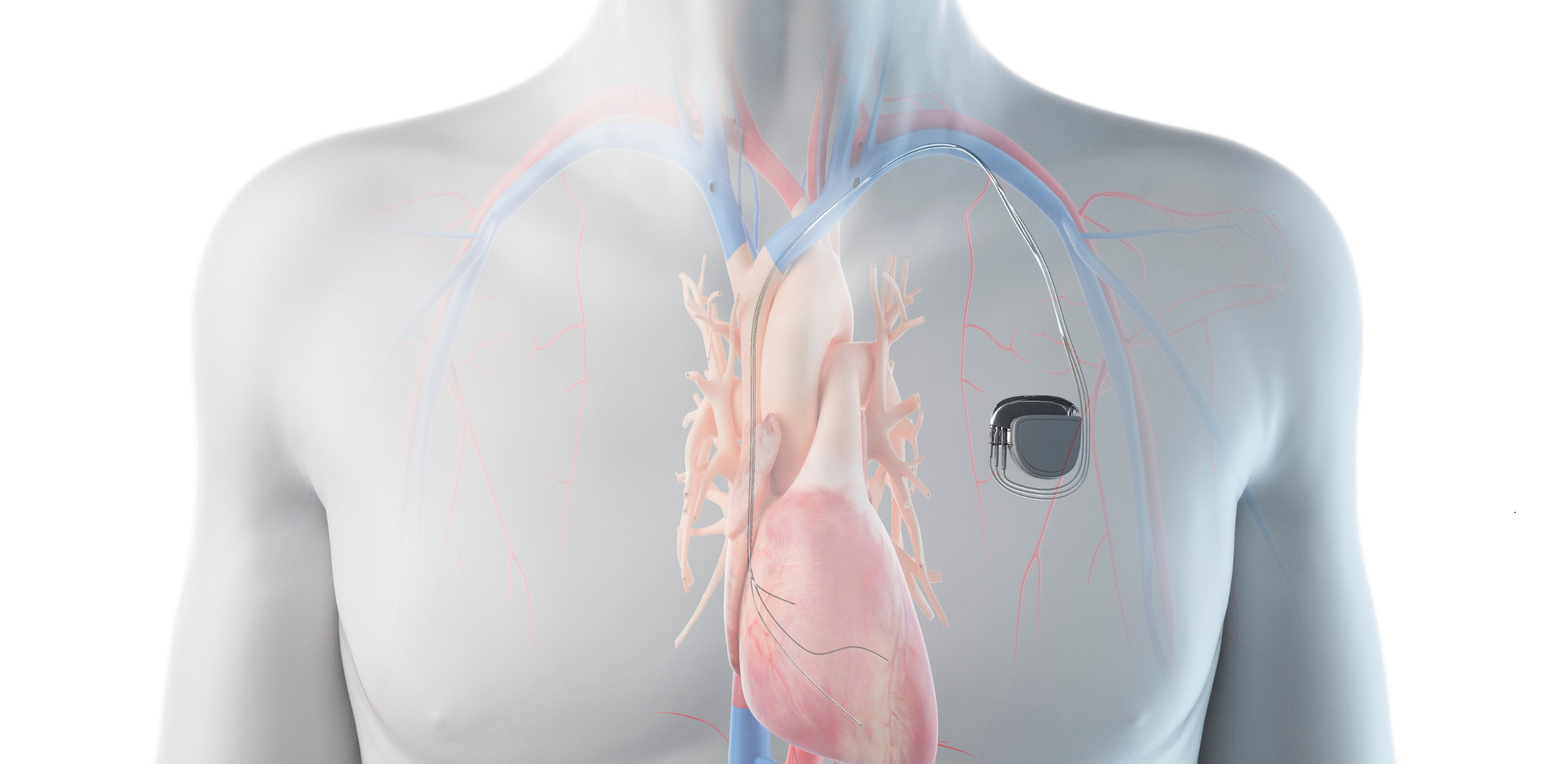- TAVI
- Tri-Klip
- Complex Coronary Interventions
- CTO Treatment (Chronic Total Occlusion)
- Balon Mitral Valvuloplasti
- Pulmonary Balloon Valvuloplasty
- Septal Ablation
- ASD (Atrial Septal Defect)
- Coronary Arteriovenous Fistula Closure
- Paravalvular Leak Closure
- Ablation Methods for Tachycardias
- Supraventricular Tachycardias
- Atrial Fibrillation
- Epikardial Ablation
- Stereotactic Radiosurgery
- Lead Extraction
- Device Implantations
- Pacemaker / ICD
- CRT / CRT-D Implantation
- Wireless Pacemakers
- Renal Denervation
- Non-Surgical Treatment of Aortic Aneurysms and Ballooning
- Cardioneural Modulation

Device Implantations
Device implantations involve the placement of various electronic devices to manage heart rhythm disorders or treat conditions like heart failure.
Device Implantations
Device implantations involve the placement of various electronic devices to manage heart rhythm disorders or treat conditions like heart failure. Key devices include pacemakers, implantable cardioverter-defibrillators (ICDs), and cardiac resynchronization therapy (CRT) devices. Each is designed to treat specific heart conditions and is typically implanted using minimally invasive surgical techniques.
Pacemaker Implantation
Purpose: Pacemakers deliver electrical impulses to regulate heartbeats, commonly used for conditions like bradycardia (slow heart rate) or heart block.
Procedure Steps:
- Preparation and Planning: Patient evaluation determines the appropriate implantation site.
- Anesthesia: Local anesthesia or light sedation is administered.
- Incision and Device Placement: A small incision creates a pocket for the pacemaker. Leads (electrode wires) are inserted into the heart chambers, and the device is placed in the pocket.
- Testing Leads: Leads are tested to ensure correct positioning and function.
- Closure: The incision is closed, and the patient is monitored post-procedure.
Implantable Cardioverter-Defibrillator (ICD) Implantation
Purpose: ICDs detect and correct life-threatening rapid heart rhythms like ventricular tachycardia or ventricular fibrillation.
Procedure Steps:
- Preparation and Planning: Patient evaluation determines the suitable device.
- Anesthesia: Local or general anesthesia may be used.
- Incision and Device Placement: The ICD device is placed in a pocket created in the chest area. Leads are positioned in the heart chambers and connected to the device.
- Testing and Programming: The device is tested to ensure proper functioning and programmed accordingly.
- Closure: The incision is closed, and the patient is monitored post-procedure.
Cardiac Resynchronization Therapy (CRT) Implantation
Purpose: CRT devices synchronize contractions of the heart chambers in patients with heart failure.
Procedure Steps:
- Preparation and Planning: Patient evaluation determines the appropriate CRT device.
- Anesthesia: General or local anesthesia may be administered.
- Incision and Device Placement: The CRT device is placed in a pocket created in the chest area. Three leads are inserted into the right atrium, right ventricle, and left ventricle.
- Testing Leads: Leads are tested to ensure proper placement and function.
- Closure: The incision is closed, and the patient is monitored post-procedure.
Advantages and Risks
Advantages:
- Life-saving: These devices can detect and treat life-threatening heart rhythm disorders, potentially saving lives.
- Improved Quality of Life: By reducing symptoms associated with heart failure and other heart conditions, they improve patients’ quality of life.
- Minimally Invasive: Most implantation procedures are minimally invasive, offering quicker recovery times.
Risks:
- Infection: Risk of infection at the implantation site.
- Bleeding or Hematoma: Risk of bleeding or hematoma at the implantation site.
- Lead Issues: Problems such as dislodgement or malfunction of leads.
- Device Malfunction: Rare risk of device malfunction.
Conclusion
Device implantations are crucial in managing heart rhythm disorders and heart failure. They are performed by specialized cardiologists and surgeons and are carefully planned based on patient health, specific heart condition, and lifestyle considerations. These procedures represent significant advancements in modern cardiology, contributing greatly to the management of heart diseases.
